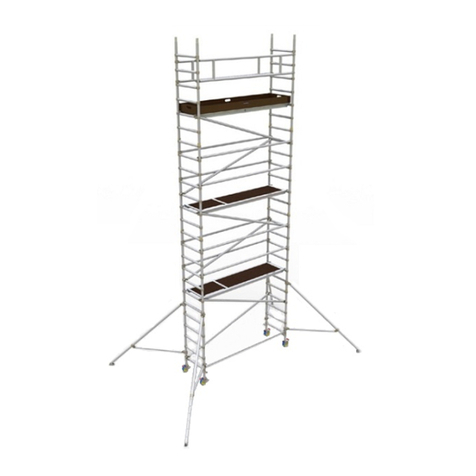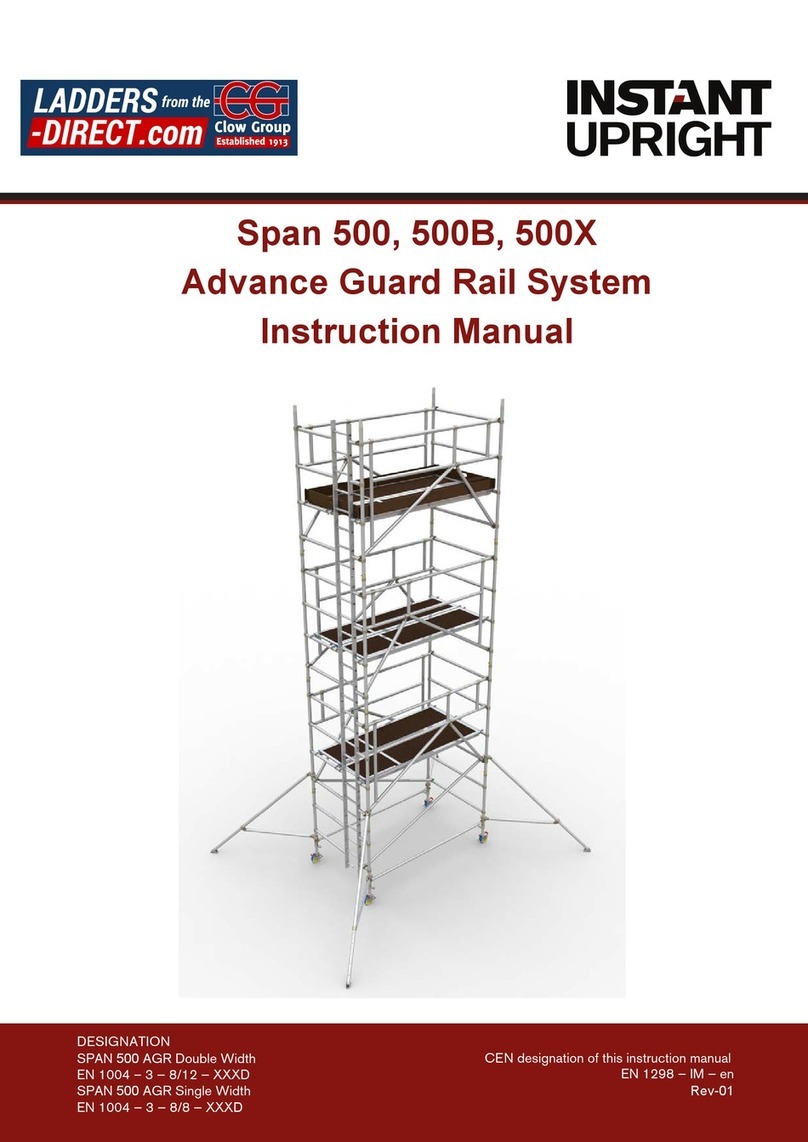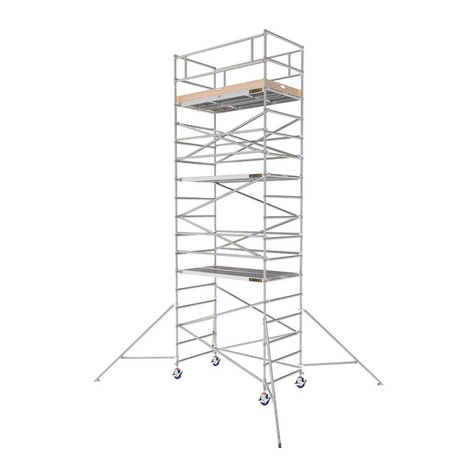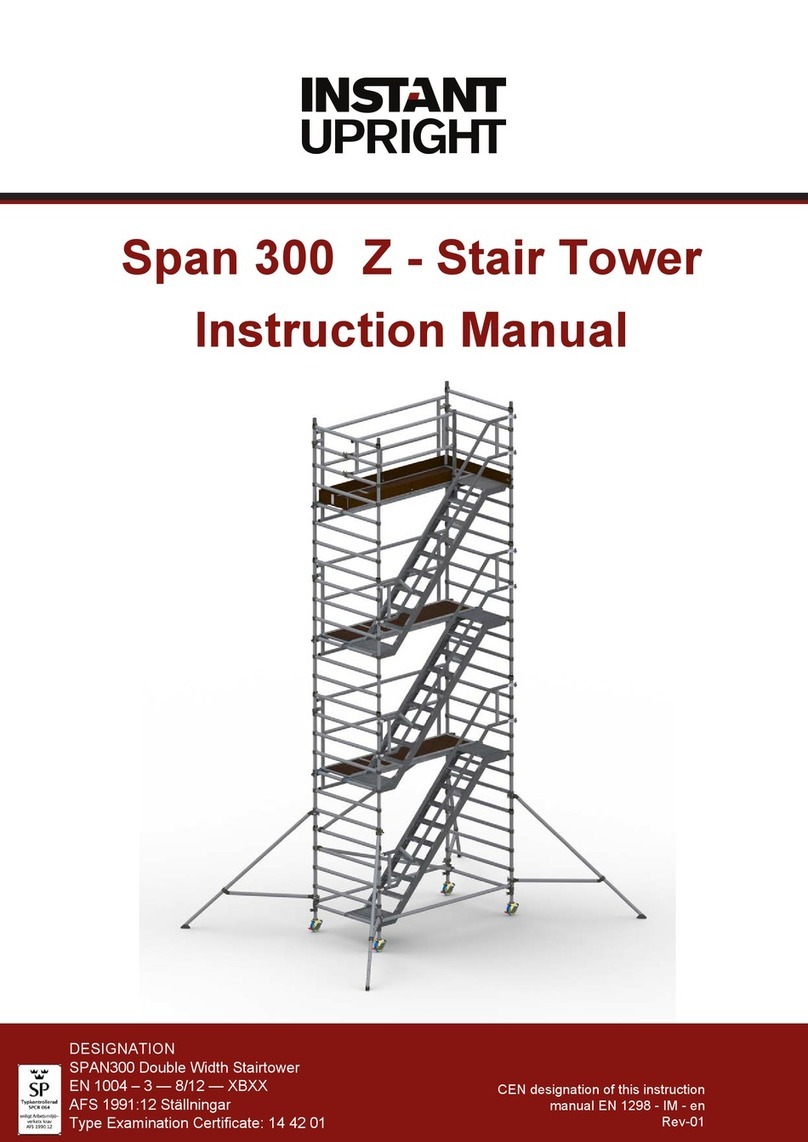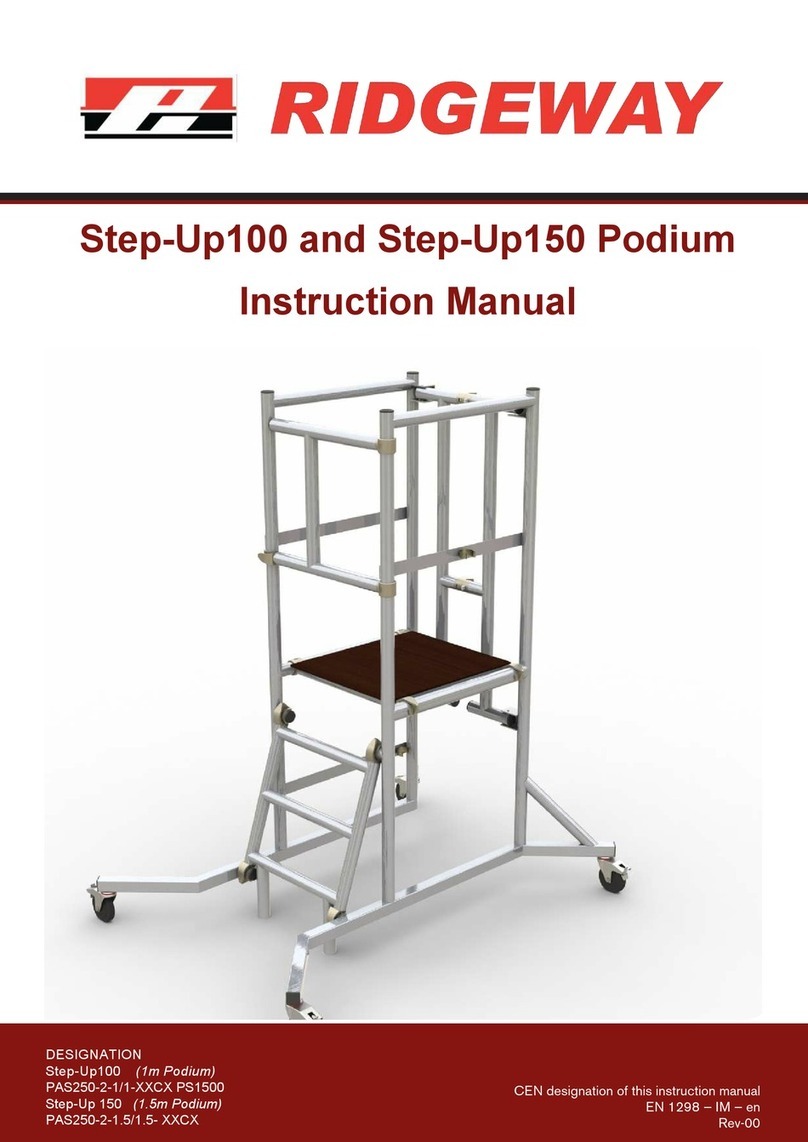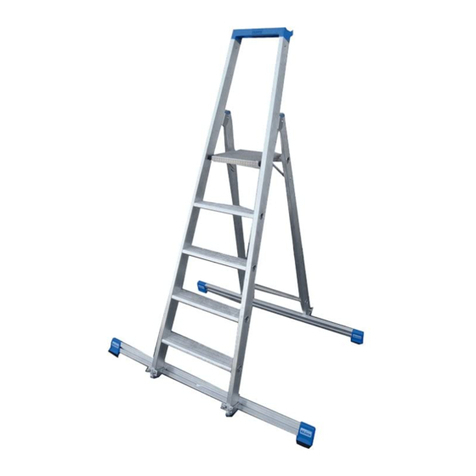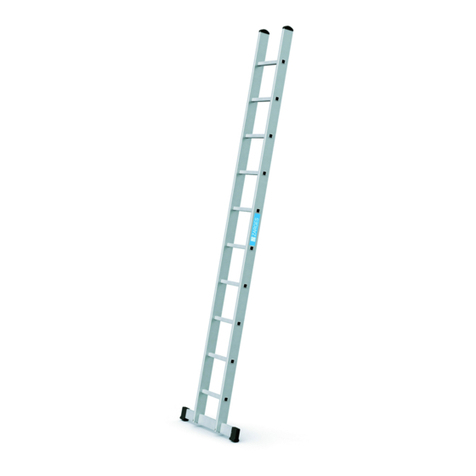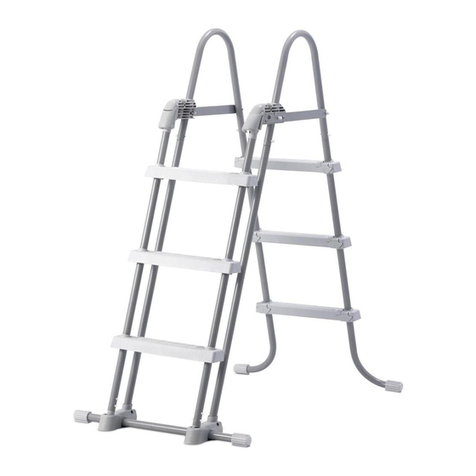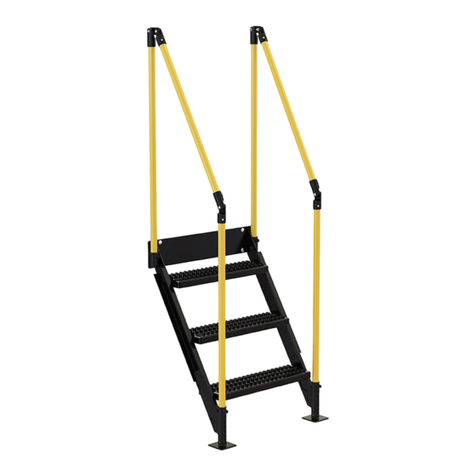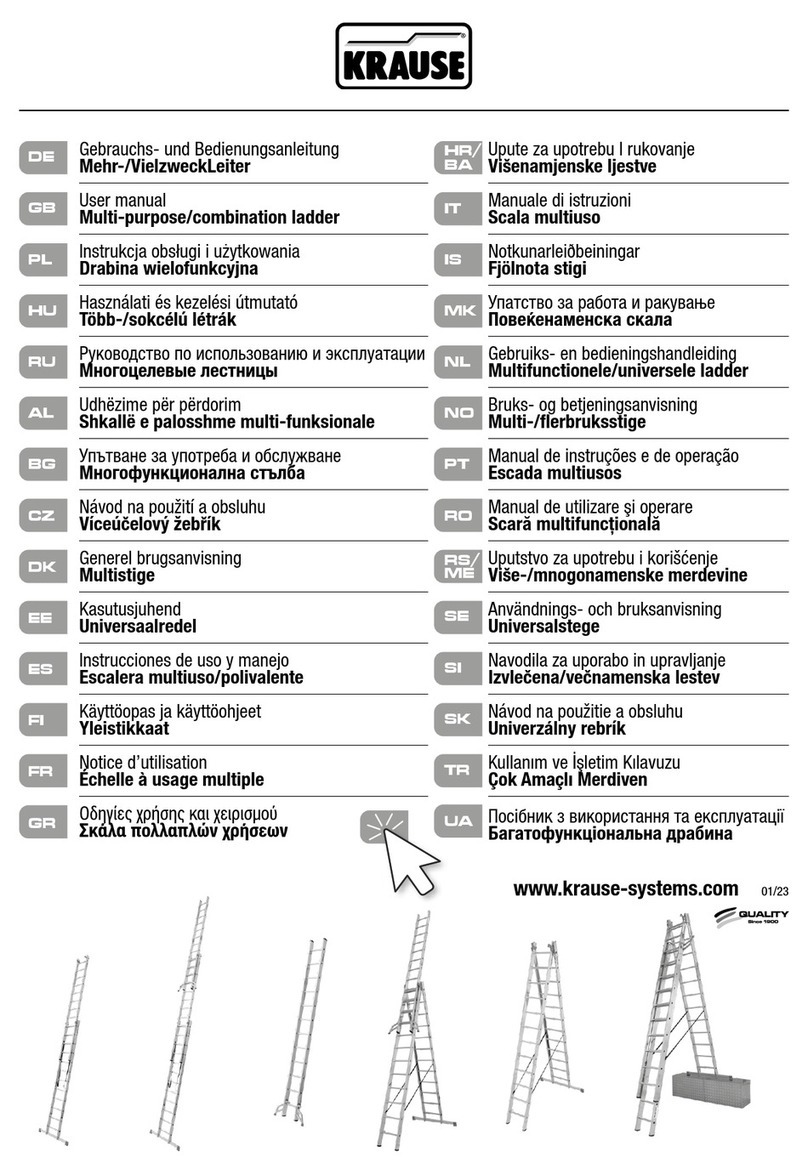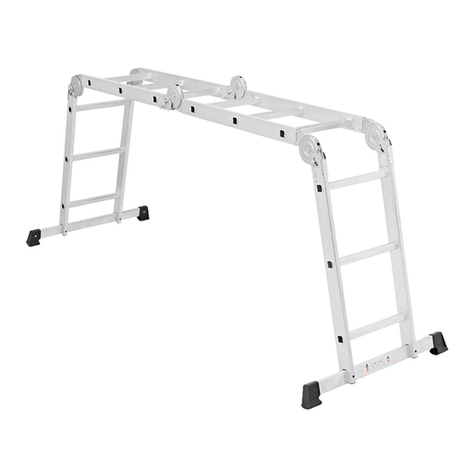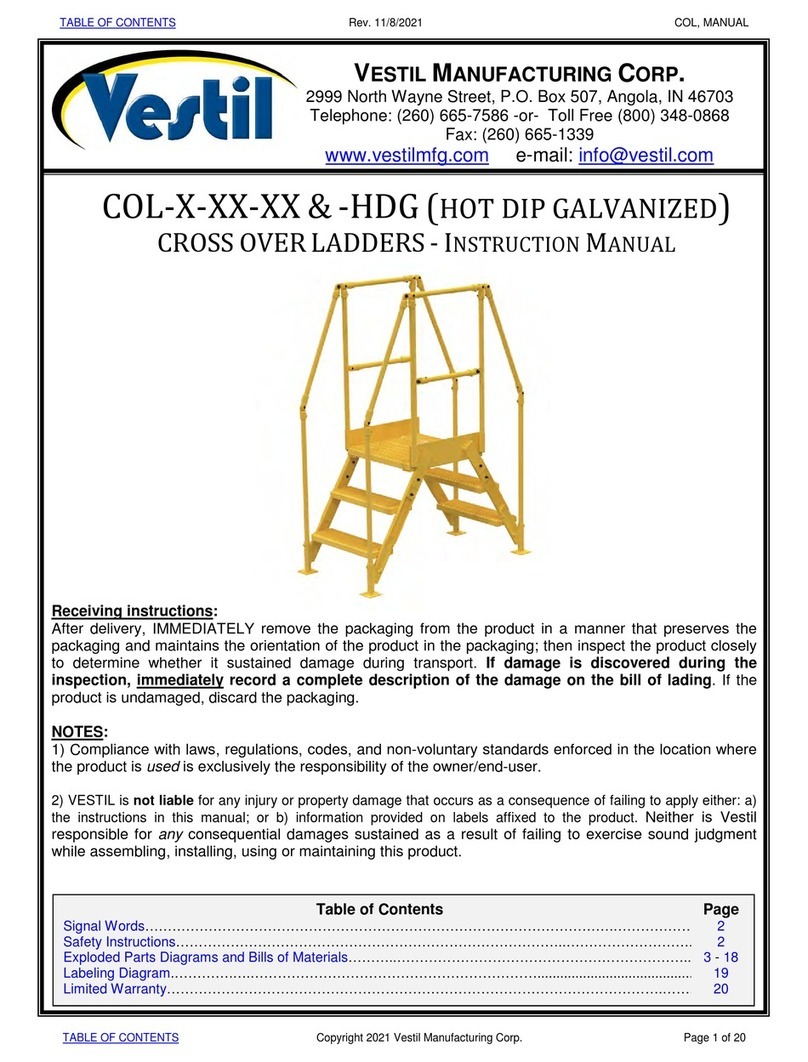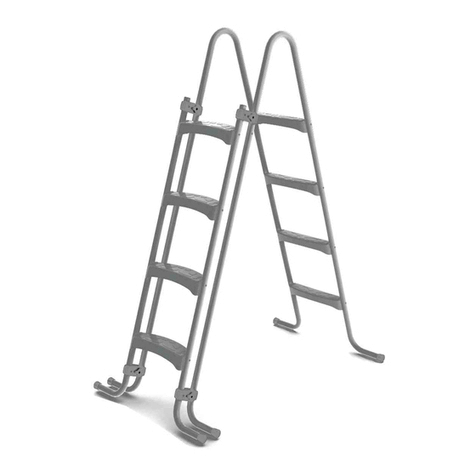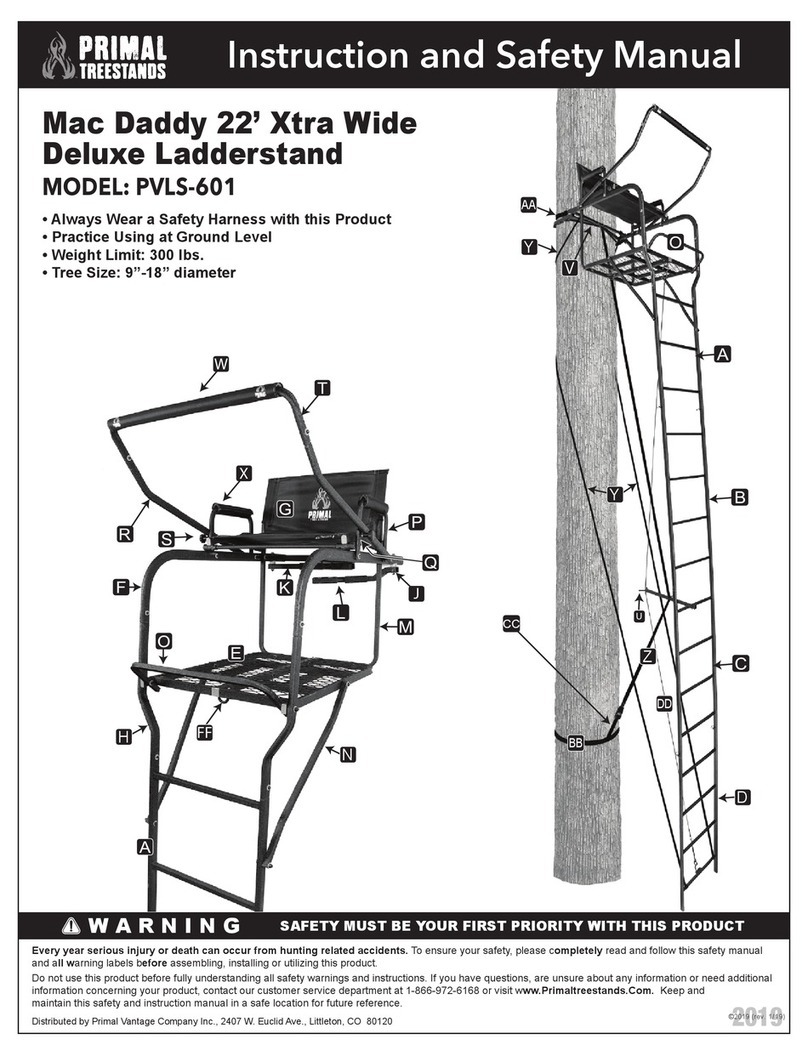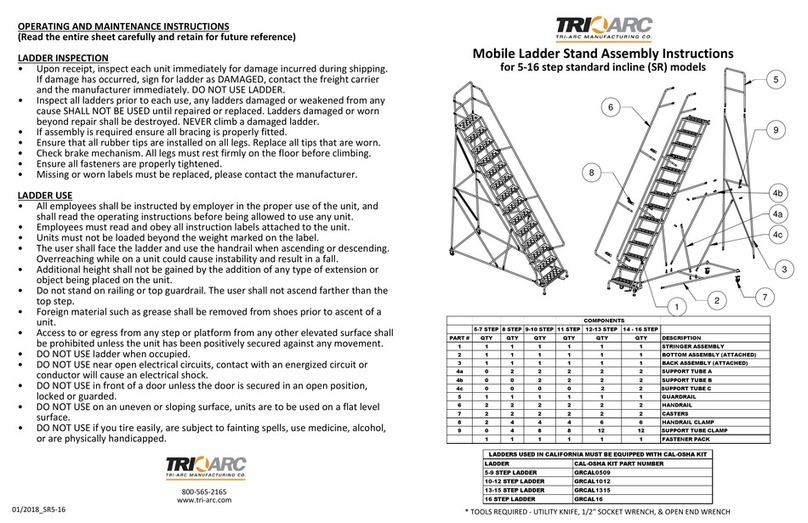Instant Upright Snappy 300 User manual

This Assembly guide is designed to provide you with step by step instructions to ensure your system is
erected easily and safely using the 3T (Through the Trap) Safety Standard. Before assembly please read
the safety notes carefully.
Snappy 300 is a mobile access tower system complying with EN 1004 and WAH R, anti slip frame access, designed for Class 3 loading.
Safe Working Loads and Working Heights
(WAHR)
The total loading on the tower structure should not
exceed 360kg. Maximum platform height for indoor
and outdoor use is 4m.
ASSEMBLY PROCESS
1. Preparation
Install the castors into the uprights if not already done.
Sort the braces into horizontal and diagonal braces - the diagonals are slightly longer.
Unlock the brace locks.
2. Base
Follow the erection procedures as shown (Section 4). It is important to follow the
bracing pattern precisely. If extension frames are being used, ensure they are “locked”
using the interlock clips.
3. Locking down the platform
A windlock clip is installed on the platform at the hook. This is locked as shown here.
Unlocked
Locked
Unlocked Locked
Unlocked Locked
4m Platform Height
1. Guardrail Frame
2. Bracing Frame
3. Toeboard Set
4. Horizontal Brace
5. Trapdoor Platform
6. Diagonal Brace
7. 7 Rung Frame
8. Stabiliser
9. Folding Diagonal Brace
10. Castors
2m Platform Height
1. Guardrail Frame
2. Bracing Frame
3. Trapdoor Platform
4. 7 Rung Frame
5. Folding Diagonal Brace
6. Horizontal Brace
7. Castors
ASSEMBLY COMPONENTS
4. BUILD PROCESS - 1 metre
Insert castors into the
folding frames. Lock 2
castors in one frame and
roll the other frame
outwards until the
folding diagonal braces
lock. Lock the other 2
castors.
Clip 2 horizontal braces
to the 7th rung either
side of the frame. Clip 1
horizontal brace to the
5th rung opposite the
diagonal braces.
Fit trapdoor platform to
the 3rd rung.
Insert castors into the
folding frames. Lock 2
castors in one frame and
roll the other frame
outwards until the
folding diagonal braces
lock. Lock the other 2
castors.
Clip horizontal brace
onto the vertical member
just above the 1st rung,
with the claw facing
outwards.
Insert two guardrail
frames and lock.
Fit the trapdoor platform
to the 7th rung.
Using the 3T method
add bracing frames. if
risk assessment requires,
toeboards could be
fitted at this stage.
123
5
4
3
2
1
Assembly Guide
Snappy 300
LOW LEVEL ACCESS TOWER SYSTEM
BUILD PROCESS - 2 metre
Insert castors into the
folding frames. Lock 2
castors in one frame and
roll the other frame
outwards until the
folding diagonal braces
lock. Lock the other 2
castors.
Clip 2 horizontal braces
to the 7th rung either
side of the frame. Clip a
horizontal brace onto the
5th rung opposite the
diagonal braces.
Fit trapdoor to the 3rd
rung.
Fit stabilisers to the base
unit - see separate
section on stabilisers.
Insert 2 standard frames
to the lower frames and
engage locking pins.
Clip 2 diagonal braces in
a zig-zag pattern from
the 7th to the 10th rung
on either side. Fit a
trapdoor platform to the
10th rung.
5
4
3
2
1
BUILD PROCESS - 4 metre
Remove the horizontal
brace from the 5th rung
and clip this onto the
vertical member just
above the 1st rung, with
the claw facing
outwards.
Remove the 2 horizontal
braces from the 7th rung
and using the 3T
method, clip them to the
12th rung both sides of
the platform. Add 2 more
horizontal braces to the
13th rung.
Fit guardrail frames and
lock.
Remove the trapdoor
platform from the 3rd
rung and fit to the 14th
rung to form a working
platform.
Using the 3T method, fit
bracing frames on either
side. Fit toeboards to
complete the build.
10
9
8
7
6
3T Safety Standard - THROUGH THE TRAP
This is an approved method of tower construction
which, if carried out by a competent person,
complies with all current safety legislation.
Construction - basic principles
• Always install the trapdoor platform over the
ladder (if one is fitted).
• Ensure the trapdoor hinges to the OUTSIDE of
the tower (not the centre).
• Once the platform has been installed, climb, using
the approved method and SIT IN THE
TRAPDOOR OPENING.
• While seated, attach horizontal braces to the
frames to form guardrails on BOTH SIDES OF
THE PLATFORM.
• See assembly instructions for specific placement
of guardrails.
• 2 braces are normally required each side -
although bracing frames can be used on the
outside if desired or specified in the instructions.
• Only when the platform is fully guarded is it safe
to stand up.
Dismantling
• Unlock the brace ends furthest away from the
trapdoor.
• DO NOT REMOVE BRACES UNTIL SITTING IN
THE TRAPDOOR.
REMEMBER - NEVER STAND ON AN
UNGUARDED PLATFORM
Warning: The Snappy 300
is designed to be extended
with Snappy Components
only. DO NOT USE parts
from the other Span range
of products.

Lightly tighten the upper clamps above the sixth rung on each corner post. Position
the lower clamp above the bottom rung. Ensure the lower arm is as horizontal as
possible. Position the stabilisers so that the footpads are approximately equidistant
from each other, as seen here. Telescopically adjust the leg and reposition the clamps
as required to make firm contact with the ground. Ensure the clips with locking pin
are in place. When in the correct position, tighten the clamps firmly.
To position the tower against a wall, do not remove the stabiliser, move parallel with
the wall.
To position the tower in a corner, remove the inside stabiliser and place the outside
two parallel with the wall.
Ballast weight maybe used to stabilise the tower, please contact your supplier for the
correct amount of ballast weight required.
STABILISERS
USAGE ADVICE
• We recommend a minimum of two people to assemble, dismantle and move the
platform tower.
• Check that all components are on site and in good working order.
• Ensure that assembly location is checked to prevent hazards during assembly,
dismantling or moving and while working on the tower. Particular attention should be
given to the ground condition, whether level or sloping, obstructions and wind
conditions. The ground condition should be capable of supporting the tower structure.
• Towers must always be climbed from the inside of the assembly and using the built-in
ladder if provided.
• Lifting operation should be done inside the effective base area of the tower.
• Moving the tower should only be done by manual effect from the base of the
tower. When moving tower be aware of overhead hazards (eg. electric cables).
• No personnel or material should be on the platform whilst the tower is being moved.
• Beware of horizontal loads which can lead to instability of the tower. The maximum
side force is 20kg.
• Not to be used on sloping surfaces.
• Do not use boxes or steps to gain additional height. If extra height required, contact
your distributor to get extra components.
• Do not lift or suspend assembled mobile tower.
• Components are normally hoisted using a rope. Always lift within the tower structure
or within the base rectangle defined by the stabilisers.
• Damaged components, or components from other tower systems should never be
used.
• Stabilisers should always be fitted when specified. Use the type of stabiliser shown
on the component list according to the tower height.
• When wind exceeds Beaufort force 4, cease using the tower. Wind speeds:
Snappy 300
Platform Height 1m 2m 3m 4m
Basic Snappy kit 1 1 1 1
Horizontal Brace 3 1 1 5
Diagonal Brace 2 2
Platform 1 1 2 2
Extension Frame 2 2
Guardrail Frame 2 2
Bracing Frame 2 2 2
Toeboard Set 1* 1 1
* Toeboard set at 2m based on risk assessment
CARE AND MAINTENANCE OF THE TOWER AND COMPONENTS
• Keep all equipment clean, especially spigots and sockets where frames join. Spigots
should fit easily into stocks. Lubricate with light oil.
• Do not strike or hammer components. Do not throw or drop onto hard surfaces.
• Lightly oil spring mechanism of the hooks.
• For transport and storage, components are best stored vertically.
• Damaged parts should be repaired or replaced, contact your supplier.
TOWER COMPONENTS REQUIRED
The following tables show a full list of components to build the tower to the platform
height specified, complying with the requirements of EN 1004 and Work at Heights
Regulations (WAHR). Total self-weight of towers are indicated.
ALTERNATIVE PLATFORM H EIGHTS
Platforms can be installed in any
rung position up to the 10th rung.
Use bracing frames on either side
to provide adequate fall
protection and toeboards based
on risk assessment.
Unit S1, Friel Avenue, Park West Industrial Park, Nangor Road, Dublin 12, Ireland
Tel: +353 (0) 1 6209300 Fax: + 353 (0) 1 6209301
Force Peak Mph Peak Kph Guidance
4 18 29 Moderate breeze - raises dust & loose paper
6 31 50 Strong breeze - difficult to use umbrella
8 46 74 Gale force - walking is difficult
To Dismantle, follow the build process but in reverse order noting the
following.
• To remove the guardrail frames or braces, first unlock the hook
at the end away from the trapdoor.
• Sitting through the trapdoor, unlock the near end hook and
remove the brace.
To Move the tower to a new position, first prepare the tower.
• Wind speed should not exceed 29 km /hr (force 4).
• Release the castor brakes.
• Raise the stabiliser feet only enough to clear obstructions.
• Ensure tower is empty (material and personnel). Move the
tower manually by applying force at the base - do not use
machinery to push or pull the tower. Once moved - prepare
the tower for use.
• Check all castors and stabilisers are in firm contact with the
ground.
• Reapply the castor brakes.
DISMANTLING / MOVING TOWERS
Other Instant Upright Ladder manuals
